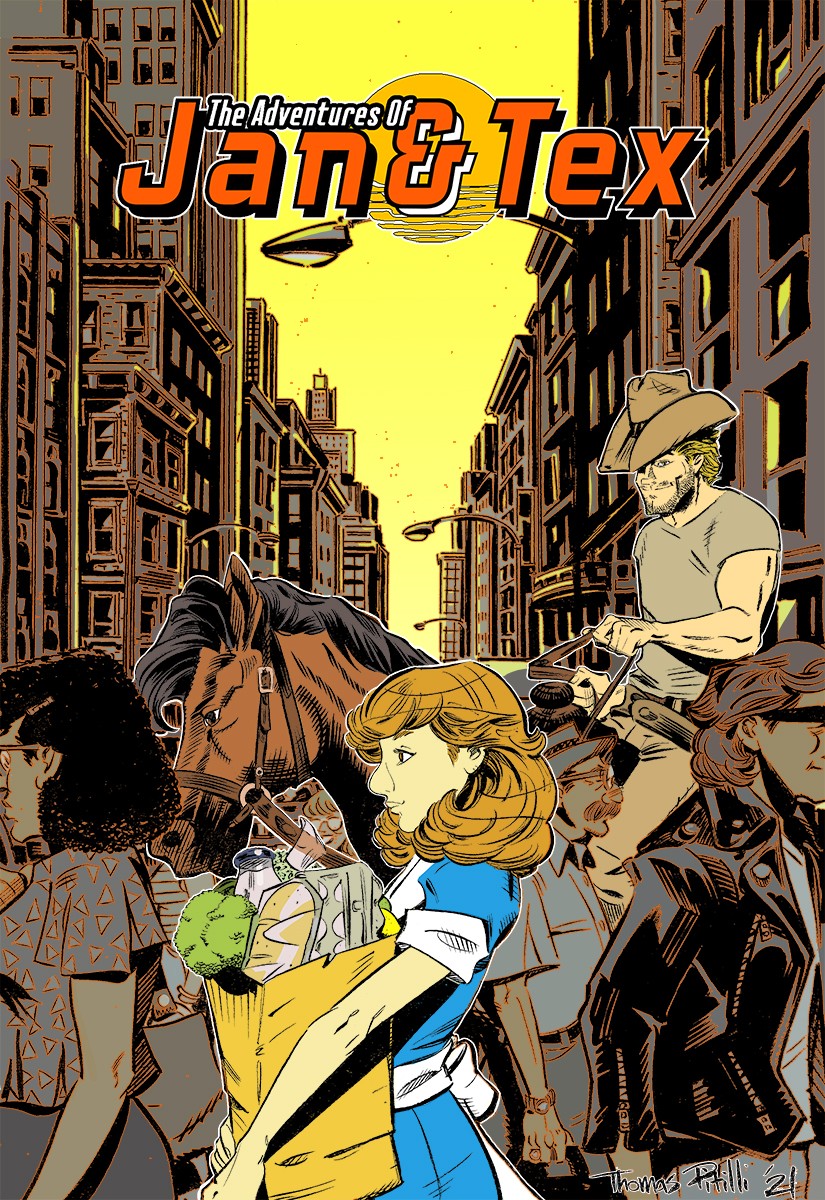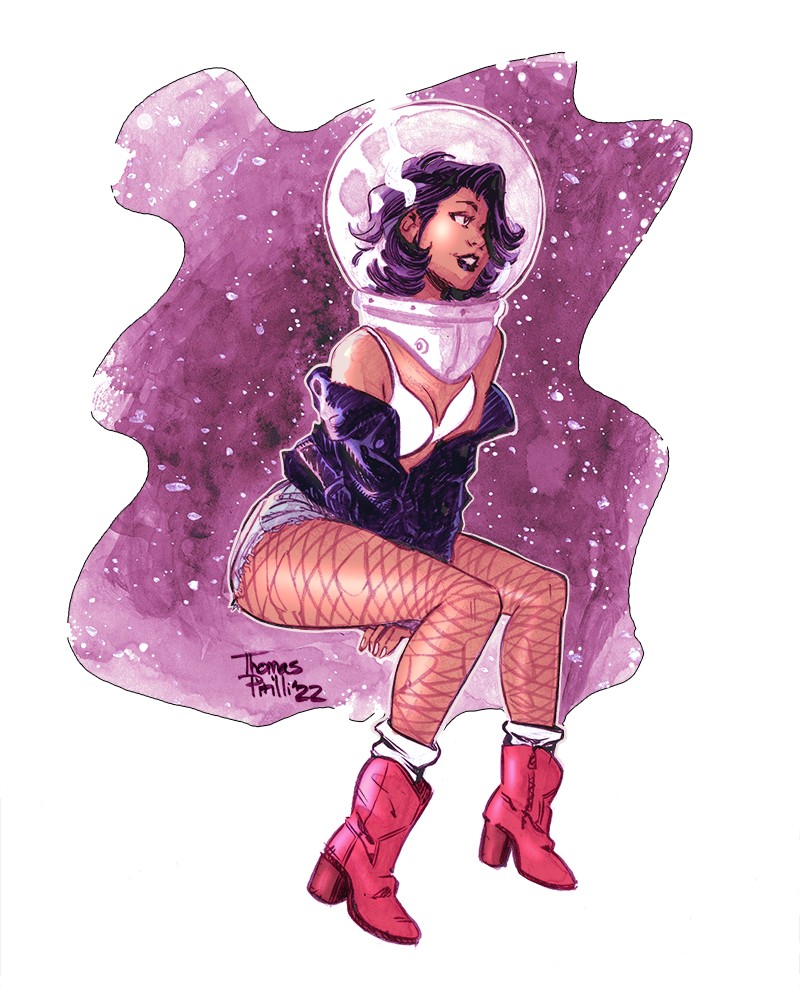We were lucky to catch up with Thomas Pitilli recently and have shared our conversation below.
Thomas, thanks for taking the time to share your stories with us today Are you able to earn a full-time living from your creative work? If so, can you walk us through your journey and how you made it happen?
I do earn my full-time living as a creative and it definitely wasn’t like that from day one [laughs].
In retrospect, I actually feel like I could have slowed down the process of getting here. When I got out of art school, my main objective was to be a full time professional artist. In fact, a part of me probably believed that I would become a famous artist at some early point in the process. I chalk that up to young cockiness [laughs]. On the one hand, my steadfast determination got me pretty far, fresh out of the gate, but it also gave me a real sense of desperation too. I was so adamant on earning my full living as a freelance artist, that I was taking on projects that I didn’t feel any kind of connection to, and also compromising quite a bit on budgets, simply to make ends meet. Dry periods always forced me to get some kind of meaningless short-term part time job in between, which I always looked at as a failure of achieving my main goal.
If I were to have slowed down a little bit, looked at the bigger picture and perhaps got some sort of full-time job that may have only been loosely within the world of illustration and design, but guaranteed a steady paycheck, I believe I would have approached my freelance career differently, with a clearer mind and an ability to say no to bad jobs and yes to the more important ones. Pretty much, having the ability to be choosey, which is a luxury as an artist.
I took the harder way and though I don’t regret anything, I do advise younger artist to perhaps learn from my approach.


Great, appreciate you sharing that with us. Before we ask you to share more of your insights, can you take a moment to introduce yourself and how you got to where you are today to our readers.
I’m a full-time comic book artist. I’ve worked on graphic novels for DC Comics, Archie Comics, Dark Horse, as well as others.
I started off as an illustrator, mainly doing editorial illustration and some advertising work, then slowly made my way into the world of comics, a world I was immersed in as a child. Beyond titles such as ‘illustrator’ or ‘comic book artist’, more than anything, I see myself now as more of a storyteller than anything else. Whether it be in the form of a comic/graphic novel, or stand-alone illustration, or even sketchbook work, ultimately I’m telling some kind of story with my art. It took me a while to realize this, but more than style and aesthetic, storytelling through images is what I feel I most bring to the table on any project I create or work on.
I believe we’re all natural born storytellers and my art is my best way of communicating ideas, themes and concepts.


How did you build your audience on social media?
Social media is a tricky one. In many ways. Generally speaking, I don’t think it’s the healthiest place to spend a lot of your time, for many reasons. I often say that if I wasn’t in this line of work, I probably wouldn’t be on it at all [laughs]. That being said, it can be a great tool in terms of getting your work out there. I think the important thing to not lose sight of is that it is just that, a tool. So, better to use it than have it use you.
Now as far as tactics, it’s a little hard to say, because by the time this interview comes out, the tactics might have already changed completely [laughs]. It’s a fast paced, ever changing an evolving space, which can be very frustrating at times, but I think tried and true principles never fail, things like consistency and professionalism.
I try and post regularly, roughly 5 days a week. I also like to engage with my audience as much as possible, one of the ways I’ve enjoyed as been through going Live on Instagram somewhat regularly. Whether I’m going live, sharing a Reel, or just posting to my Story, I try and keep the focus on the process of making art. Ever since Mr. Rogers would take us to the crayon factory to see how crayons were made, I think that level of curiosity of ‘how the sausage is made’, is a strong one. So I try and give my audience as much of that as I can.
Are there any resources you wish you knew about earlier in your creative journey?
Can I say Youtube? [laughs]. I grew up before there was such a thing as YouTube, but it astounds me just how much information there is on there for building particular skills. I often push against this idea that young artists today need to go to art school. It’s a colossal waste of money in my opinion. And that’s coming from someone who went to art school and taught art on a college level [laugh].
If you want to learn how to use a brush, present your work, build a website, print your book, start a crowdfunding projects, etc, all of that info is now available, largely for free online. It’s a wild world. You have to use your discretion in terms of vetting the information, and you actually have to apply what you learn, but considering you’re doing those two things, you can save yourself thousands of dollars that would have otherwise been spent on ‘higher education’.
Contact Info:
- Website: https://www.thomaspitilli.com/
- Instagram: https://www.instagram.com/thomaspitilli
- Linkedin: https://www.linkedin.com/in/thomas-pitilli-56528348/
- Youtube: https://www.youtube.com/channel/UCzxfjFdpa47MOSXC8Axje6Q
Image Credits
All images copyright Thomas Pitilli


